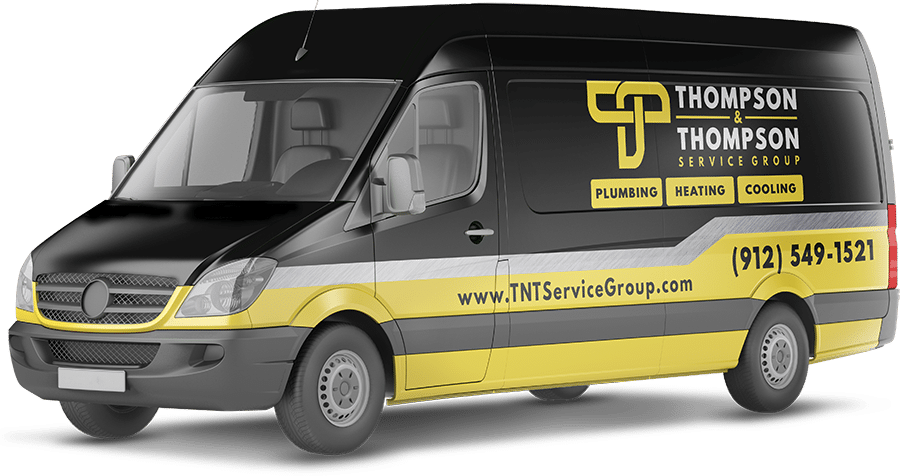Gas Hot Water Heaters
There are two types of gas-powered water heaters, natural gas, and propane. They come in different configurations and capacities based on user needs and installation area. Cold water enters through a copper pipe from your home’s plumbing, entering the top of the tank and feeds water to the bottom where the heat source is usually located. As you use hot water through a tap or in a fixture, a constant volume of water is maintained with cold water replacing the existing heated water. A thermostat senses when the temperature drops below a certain level which signals the burner at the bottom of the tank to ignite and heat the water. For safety, a thermocouple unit checks to make sure the pilot light is burning before it releases gas to the burner. A vent stack is positioned at the top to release any exhaust fumes from the gas combustion to the outside air. An electric water heater works in a similar way except the heating element is submerged in the water, and there isn’t a need to vent any exhaust.
Why Your Hot Water Goes Cold
If you have an electric water heater, it’s possible that it has been unplugged or tripped a circuit breaker. Some electric heaters also have a fuse built into its onboard electrical controls. It is also possible that one of the heating elements have burned out.
Aside from an electrical problem, it may be leaking and unable to hold the right amount of water in the tank, or there could be corrosion or sediment that is interfering with the heater’s efficiency.
A gas water heater could have an extinguished pilot light or debris in the gas feeder lines that bring the natural gas to the burner. It could also be a faulty thermocouple that is not allowing any fuel to flow to the burner. Airflow is very important for the operation and heating of the water, so check for dust, cobwebs, items placed too close to the base of the unit that may interfere with the mix of air and gas to the burner.
The thermostat temperature might be set too low as well. If it’s too low, (below 165 degrees), bacteria is encouraged and may clog some lines. Well-meaning homeowners who want to save money and energy turn the thermostat down without knowing the impact it will have on their water supply, like odd smells or discoloration of their tap water, and possible illness from the bacteria levels in the water.
It could also simply be that your hot water heater doesn’t have the volume you need for everyday usage. The burner or electric element can’t heat the water instantly, so when the quantity that is already heated is used up, cooler water then cycles through the tank without staying in there long enough to be heated. consider a water heater with a higher capacity or even a tankless water heater.
Some other thing to consider: It’s also possible a mixing valve in your shower faucet isn’t working properly. This may be the culprit if other taps produce hot water, but not the shower.
Tankless water heaters – a solution?
This depends on the amount of hot water is demanded at different locations. If too many people are trying to use hot water, a tankless water heating system will have problems keeping up without carefully considering the size up front. Even though they may save close to $100 a year on energy savings, the initial installation cost is high and could take over 10 years to recover.
Do They Save Energy?
They use less energy than a standard tank type water heater because they don’t store hot water which can lose some of its heat as it sits. Another advantage is that a tankless hot water heater’s lifespan is almost twice as long. Over the long term, they can be more efficient, but unless you’re installing them in a newly built house it’s probably not a good idea to replace your current heater with instant heaters.
What Maintenance Should a Homeowner Do?
It’s a good idea to flush the tank out at least once a year. This involves a few basic supplies like a garden hose and bucket. The relief valve should also be checked to make sure it is in good working order. The water heater should be clear of clutter and kept clean.
We hope you found this article helpful.
If you enjoyed this article, please take the time to share it on any of these Social Media networks. Thank you!





